Not a musical "Bazooka" at all. Part of 2
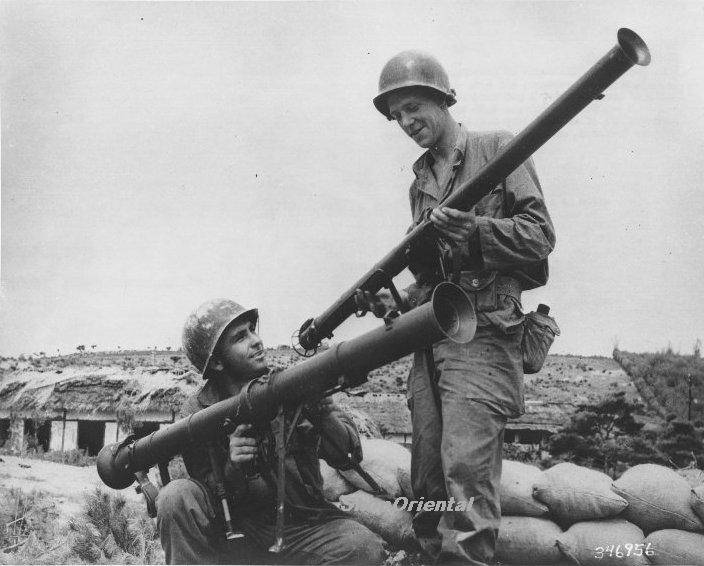
American soldiers with Bazookas М9А1 and М20 in Korea
Bazooka after the second world
During the years of World War II, the American industry released 477 128 (according to other data, probably without taking into account the М18 - 476 628) "Bazook" of all modifications and more than 15 of millions of different types of rocket-propelled grenades. US allies have put on the anti-Hitler coalition 21 453 antitank grenade launcher and M1 M9 and 521 640 combat (MB A1, A2, A3, A4) and the 6 340 training (M7 A1, A2, A3) grenades to them.
Unfortunately, there is no reliable information about the use of the Bazook by the Red Army. For the first time, the M1 grenade launcher (M1 "Bazooka") was demonstrated to the representatives of the Soviet side in the summer of 1942 and then aroused great interest. However, after tests conducted in the USSR at the end of 1942, serious flaws in the “Bazook” design came to light. First of all, they included the dependence of the grenade launcher’s combat readiness on the power supply sources and the impossibility of using it at temperatures below -10 ° C. It is natural for the new weapons “Children's diseases”, as well as the opinion of the command that the troops were sufficiently saturated with relatively light 76-mm cannons with cumulative ammunition, had a negative impact on the fate of “Bazuk” in the USSR. And this is very regrettable, especially given the fact that no more than a year will pass and among the trophies captured by Soviet troops will be the German grenade launchers "Ofenror" (RPzB.43 "Ofenrohr") and "Panzershrek" (RPzB.54 "Panzerschreck"), Essentials representing an improved version of the American "Bazuki". They will arm themselves with separate fighter units of the 1 of the Ukrainian and 2 of the Belarusian Fronts.
After the end of the Second World War, in the framework of military assistance, 60-mm "Bazuki" hit the countries of Latin America and Southeast Asia, and also entered into service with the armies of NATO countries, but they were quickly replaced by more advanced M20 grenade launchers. An insignificant number of Bazook, smuggled, or even simply stolen from warehouses, was armed with Hagan fighters and other Jewish military underground organizations in Palestine. During the first Arab-Israeli war, a small number of such grenade launchers were purchased for the newly created Israeli army.
In the course of the Vietnam Wars, the Bazuki were used by all opposing sides. Trophy and possibly obtained from China M9 and M9А1 rocket launchers were from the Vietminh units who fought with the French colonial forces. In insignificant quantities, Vietnamese guerrillas established a makeshift release of a copy of the M9 grenade launcher (M9 Vagooka), and in 1953, Viet Minh received new M20 grenade launchers captured, among other weapons, by the Chinese "volunteers" in Korea. The Bazuki М9А1 were for a long time in service with the units of the army of South Vietnam and paramilitary groups that supported the government forces. The French used such weapons, previously obtained from the Americans, during the fighting in their overseas colonies in Southeast Asia and Africa.
Countries that supplied Bazooki N11 and N19 and ammunition | 2.36 "N11 and N19 anti-tank rocket launchers | Anti-tank grenades N16, М6А1, but no nl A2, Do, A4 | Training grenades N17 A1, HE AO |
England | 2,127 | 86,000 | 1,630 |
the USSR | 3000 | 8,500 | 1,605 |
France' | 11,350 | 0 | 0 |
China | 2,018 | 370,900 | 1,000 |
Brazil | 2,876 | 1000 | 2,000 |
Latin America | 1 | 20 | 20 |
Canada | 171 | 49,220 | 85 |
'French troops fighting on the side of the anti-Hitler coalition. E-ammunition was shipped directly from US units.
The last big war in which American 60-mm anti-tank anti-tank grenade launchers were used was the Korean War. The Americans and their allies started it with the Bazookas М9А1 and М18. The infantry division of the South Korean Army (YUKA) by June 1950 was armed with 111 grenade launchers M9A1 and M18, the American - 81. By the beginning of the war, the American infantry division had not yet received the M465 grenade launchers relying on the 20 staff. Their production was deployed only 15 days before the outbreak of hostilities, and they did not have time to go to the troops.
For the first time in weeks of the war, a critical situation has developed for South Korean and American soldiers at the front. Success tank The attack by the Korean People's Army (KPA) was complete. In those days, South Korean infantry units first encountered thirty-fours northwest of Seoul. This meeting led to the complete demoralization of these units. Not only had most South Korean soldiers never seen a tank before, but they quickly became convinced that the Bazookas were powerless against the T-34-85. After September 15, 1950, when the South Korean troops were reorganized, the 60-mm Bazooka remained in the YUKA infantry division.
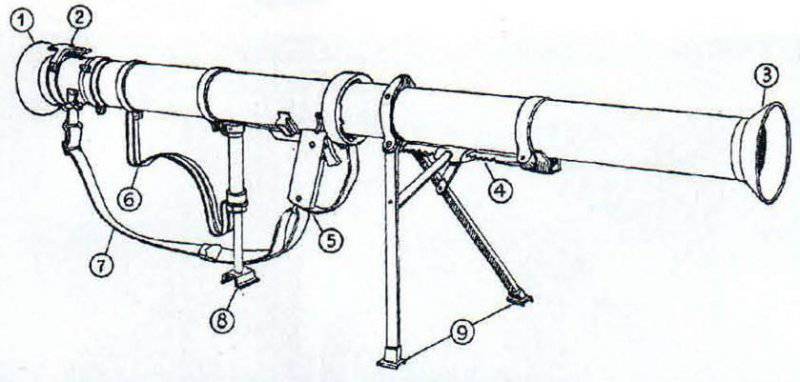
"Super-Bazooka" М20: 1 - the official socket; 2 - spring-loaded latch; 3 - muzzle socket; 4 - gear rack; 5 - pistol grip with protective bracket; 6 - butt; 7 - strap for carrying a grenade launcher; 8 - retractable monopod support; 9 is a bipod.
Illustration of the italian instruction
The American soldiers were also in a state of shock. The battalion’s main anti-tank weapon, the 60-mm grenade launcher, was absolutely useless. The very first clash of the Smith combat group with the North Koreans proved this. The two infantry companies of the US Army 24 Infantry Division, reinforced by six 105-mm howitzers, under the command of Lieutenant Colonel Brad Smith by MacArthur’s order were hurriedly deployed from Japan by military transport aircraft to help the retreating units of YUKA. The position of the Smith combat group took July 4 north of Osan. The Americans were given the task of defending the Seoul-Osan highway. When, at dawn on 5 July 1950 33, the Thirty-Fours of the 107 KPA regiment attacked a battle group, the only effective anti-tank weapon turned out to be 105-mm howitzers. Six cumulative projectiles, namely, so much was available to the gunners, managed to knock out two tanks from a distance of about 450 m. Another two vehicles were put out of action after the high-explosive shells hit their stern part. In the course of this battle, American infantry fired 22 shots at 60-mm Bazook tanks to no avail. This only increased the demoralizing effect of North Korean armored vehicles. Having destroyed all the vehicles and two howitzers of the Americans, the tanks of the 107 regiment went farther to the rear, leaving the KNA 4 infantry division to kill the Americans.
Bitter experience forced the Americans to urgently rearm. Only now, the soldiers received instead of 60-mm new, 88,9-mm, M20 grenade launchers, hastily delivered by air from the USA along with the instructors.
"Super Bazooka"
Work on a more powerful than 60-mm grenade began in 1943. In October, 1944 was based on design solutions implemented in the Bazook МХNUMX (М18 "Bazooka") and under the influence of the German anti-tank grenade launchers "Ofenror" and The Pantsershrek, which the Americans encountered in Normandy, had a prototype 18-inch (3,5-mm) T88,9 grenade launcher. The increase in caliber affected the armor penetration of the weapon, which almost doubled to about 74 mm. Increased and the firing range.
The 88,9-mm anti-tank grenade launcher was adopted on 11 on October 1945, and the first two modifications received the official names M20 and M20B1. Unofficially, the new grenade launcher was called the “Super-Bazooka” (“Super-Bazooka”). М20 entered the troops with a significant delay due to the fact that after the end of the Second World War, the need for such weapons sharply decreased. Initially, according to the states of 1946, it was planned that 88,9-mm grenade launchers would go into service with only combat units, while the Bazuki М9А1 would remain in the headquarters and auxiliary units. Small-scale production of “Super-Bazook” began in 1948, and mass production was adjusted only in 1950, with the start of the Korean Won. In 1952, the new MXXUMX20 and M20X1BX20 have replaced the M1 and the M20B1.
Breech of the grenade launcher M20B1
"Super Bazooka" was produced in four versions, of which the main ones were М20 and М20А1, and the letter "В" in designation of two other modifications meant only changes in their production technology and materials. The front and rear parts of the trunks were interchangeable between modifications, which the M91 and M18 did not have. The M20 and M20А1 grenade launchers have a muzzle and a breech bells, couplings, fastening mechanisms for both parts of the barrel “traveling”, the bases of the extendable support and the sight are attached to the barrel with bolts. On М20В1 and М20А1В1 these parts were integral and were made together with the barrel.
The M20 and M20B1 grenade launchers were equipped with a folding bipod and adjustable retractable monopod support. The bipod was attached under the front part of the trunk, the change in its height was adjusted by tilting forward and moving along the rack mounted on the bottom of the trunk. The rake also served to fix the bipods in position. The metal tube in which the monopod was placed served as a part of the aluminum shoulder rest of the frame type, mounted under the rear part of the barrel. The appearance and method of mounting bipod, toothed rack and bearings could vary depending on the modification of the grenade launcher. For the convenience of handling the “Super Bazooka” in warm gloves, the protective clip and trigger were increased in size. The fuse lever on the early version of the M20 was located on the upper rear surface of the handle and moved up to the “Safe” position, and shifted down to the “Fire” position. In the late version М20 and in all М20А1, the lever was located on the handle on the left and moved up to the “Fire” position, and moved down to the “Safe” position.
The appearance of the М20А1 and М20А1В1, the production of which began after the end of the Korean War, was the result of the combat use of the М20 and М20В1. After 1953, the M20A1B1 modification became the main and most widespread of the “Super Bazook”.
The design of new grenade launchers has undergone significant modernization. The refusal of the bipods and the monopod (which was practiced at M20 and M20B1) made it possible to facilitate M20A1 and M20X1B1 on 900 and 450 g, respectively. However, the main change has undergone a system of fixation and electric ignition of a reactive grenade. On М20А1 and М20А1В1, the spring-loaded latch and contacts were replaced with a special contact-locking mechanism installed at the official socket. The lever on the front wall of the mechanism box could be translated into two positions: the bottom one - “Load”, when the grenade was being loaded, and the top side - “Fire”, when the “Bazooka” was ready to fire. When switching the lever from the lower position to the upper, the latch entered the annular recess on the grenade stabilizer, and the contact pin rested on the contact ring, closing the electrical circuit. Now, after the fuse was moved to the “Fire” position and the trigger was pulled, a shot could be fired.
The trunk of the Super Bazooka M20A1B1 1524 mm long was made of aluminum alloy and could be disassembled into two parts, each 762 mm long. The mass of the front and rear parts of the barrel differed depending on the modification of the grenade launcher. In М20А1 it was 2 and 4,3 kg, and in М20А1В1 respectively 1,8 and 4,1 kg. The total mass could also differ: for the M20 it is 6.8 kg, for the M20А1 - 6.4 kg, for the М20А1ВХNUMX - 1 kg. The caliber of all the “Super Bazooks” was 5.9 mm. The induction generator of the electric ignition device was placed in the pistol grip. The grenade launcher was equipped with an aluminum frame-type shoulder rest and an optical sight. The effective range of fire on a moving target was 88,9 m, on a fixed one - 185 m. Maximum range of fire to 275 m. A trained calculation could produce 830-12 shots per minute, but the average rate of fire was significantly lower and did not exceed 18-4 shots. The calculation consisted of two people.
Three types of rocket-propelled grenades were used for firing from “Super-Bazook” - the cumulative М28, the smoke ТХNUMXЕ127 and the training М2, as well as their modifications
The rocket grenades had the same length 59,8 cm and caliber 88,9-mm (3,5 ”) and consisted of a ballistic cap with a fuse, a jet chamber with a powder charge and electric fuse, and a stabilizer. Made of aluminum, the stabilizer consisted of three pairs of feathers on which a ring was attached, which served to hold the grenade in the barrel.
The mass of grenades and their warheads differed (the latter at the same time kept the total length of 26,8 cm for all), as well as the type of warhead and fuse. The main difference between grenades consisted in the method of fastening the wires of the electric igniter, which was associated with changes in the design of the Bazuk МХNUMX and М20А20 electric ignition devices. The design of 1-inch grenades for the M3,5 and M20В20 grenade launchers differed little from the 1-inch grenades - one wire of the electric igniter was soldered to the stabilizer ring, and the second was twisted and placed in the nozzle. When loading the wire was removed from the grenade and connected to one of two contacts on the grenade launcher body. With the advent of modifications М2,36А20 and М1А20В1, changes were made in the design of grenades. The number of wires increased from two to three. Now one wire of the electric igniter (green) was soldered to the aluminum stabilizer ring, the second (red) to the copper contact ring on the stabilizer, and the third (blue) was used to check the electrical condition of the electric igniter or to connect to the contact on the grenade launcher body if the grenades were used with modifications М1 and M20B20.
The mass of the M28А2 grenade was 4,08 kg, of which 0,875 kg is accounted for Composition B explosive (a mixture of RDX and TNT in the ratio 60 / 40). The significantly increased charge of the cumulative grenade allowed the penetration of homogeneous armor up to 280 mm in thickness along the normal, which made the “Super-Bazooka” a truly “lethal” anti-tank weapon. Grenade speed 105 m / s. Grenade М28А2 was painted in olive color. Smoke grenade MZO WP was intended for targeting and setting the smoke screen. White phosphorus served as a smoke generating substance. Charge weight 1,06 kg. The pomegranate was painted gray; a wide yellow stripe was applied to the head. In both grenades, M404, M404A1 or M404A2 inertial fuses were used. The training grenade М29А2 outwardly did not differ from the cumulative and smoke (with the latter, she had the same weight - 4,06 kg). The head of the grenade was painted blue. The filler was plaster. The training fuse M405 outwardly did not differ from the combat M404.
The M404 inertial instantaneous impact fuse was more complex than the 60-mm wartime grenades fuze design and resembled the post-war 60-mm M6X7 and T12 rocket gates. The drummer of the fuze device fixed in the spring-loaded plunger instead of the check was held by the spring-loaded pin in the recessed position. The safety pin covering the coupling has prevented the pin from falling out. In this position, the rocket grenade was safe during transport and handling. After removing the safety strip, the pin is shifted up, however, due to its shape and spring pressure on the plunger, it turned out to be coupled to the drummer, keeping it in the upper position. The fuse could not get on the platoon while the pin is in the upper or lower position. When the grenade was charged in the Bazuku, the pin was in an intermediate position in which the fuse could stand on a combat platoon. At the time of the shot, the plunger under the action of inertia shifted back, as a result of which it was disengaged from the pin, and when the grenade left the barrel, the pin fell out under the action of its spring, and the fuse rose on the platoon. In flight, to prevent premature detonation of the grenade in a collision with branches, the plunger spring kept the inertial weight from moving toward the firing pin. When the grenade hit the target, the inertial weight squeezed the spring, and the drummer impaled the detonator cap. If, for any reason, the shot was not fired, then after the Bazuki was discharged, the safety strip was again fixed on the grenade, and the safety pin shifted to the lower position.
Increasing the mass of 88,9-mm jet grenades by more than two and a half times compared to 60-mm has created great difficulties in transporting them. During the Second World War, the calculation of "Bazooka" of two people could carry up to nine jet grenades. For this purpose, special MB bags were used, designed for three closures with grenades or vests of M1 mortar shells, which also had three closures placed in large pockets on the chest and back. Usually the shooter carried the 2-3, and the charging 6 of jet grenades. For 88,9-mm rocket-propelled grenades, a belt system was created, allowing two seals to be stapled together and carried using shoulder straps. The charger and the ammunition carrier had to carry two such systems, but they were used extremely rarely. In 1961, the command decided that the shooter should carry one, and the loader six
grenades in closures, which was about 27 kg. For carrying, the closures fit in a standard backpack or were fastened with straps to the cargo frame of the backpack. Usually, each of the calculation numbers carried no more than two grenades.
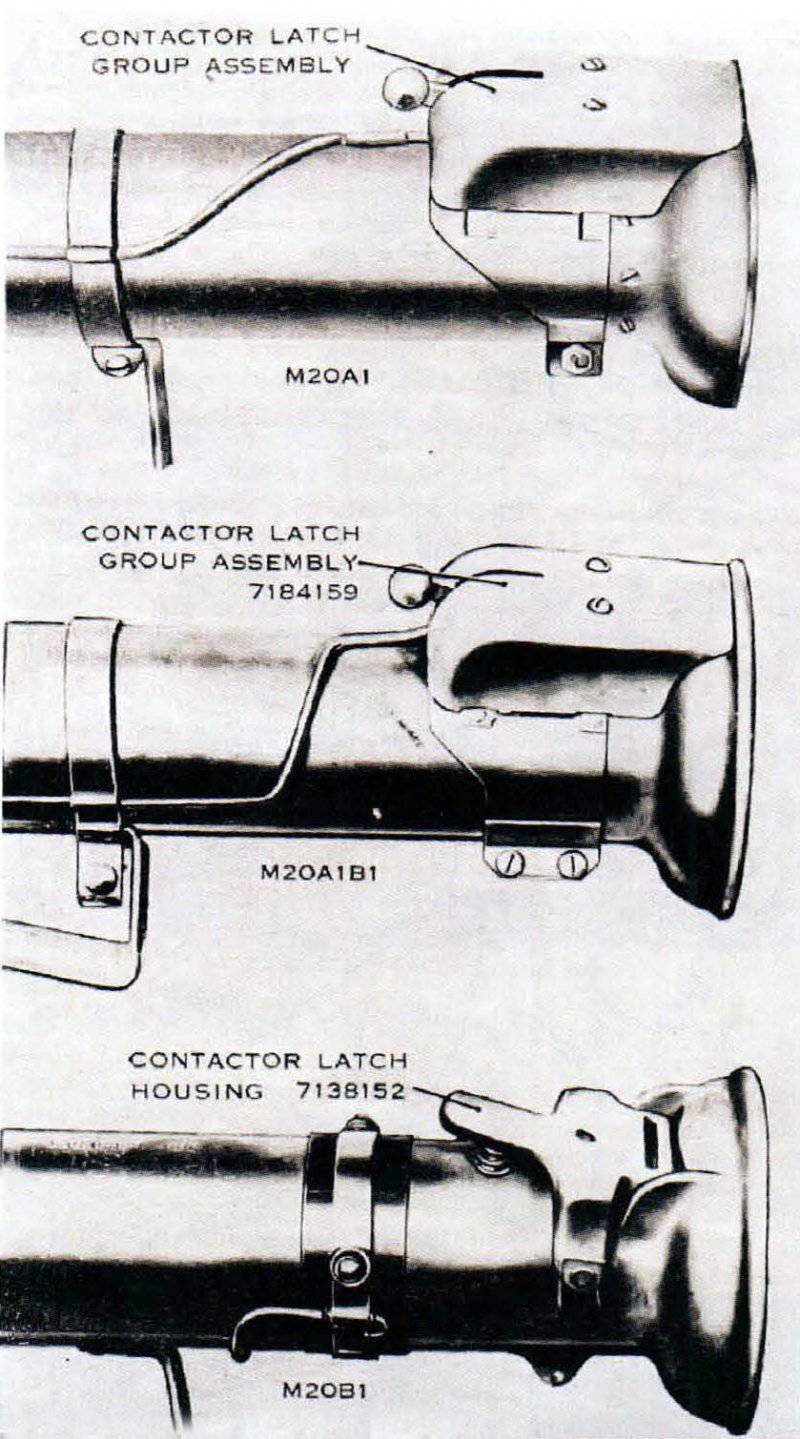
The breech parts of the M20А1 and М20А1В1 grenade launchers (top and center) with contact locking mechanisms and the breech of the M20В1 grenade launcher with a spring-loaded latch and contacts (bottom)
M20A1V1 grenade remained a major American infantry antitank weapons until the mid 1960-ies., When they were replaced by 90-mm dynamo-reactive (recoilless) antitank grenade launchers M67 and 66-mm disposable rocket-propelled grenade launchers M72 LAW. During the 1950-ies. 3,5-inch "Bazuki" staffed all full-time armored vehicles (excluding tanks) of the US Army.
From 1946 to 1952, the division of weapons of the rifle platoon of the American army had one “Super Bazooka” and light machine gun М1919А6. The calculation of the grenade launcher consisted of a shooter, loader and two carriers of ammunition. In May, the 1952 of the weapons department was reinforced by a second machine gun, and the calculation of the "Bazooka" was transferred to the platoon control section. According to the experience of the Korean War, in 1953-1955. the number of "Super Bazook" in the heavy arms of the battalion of the infantry and airborne divisions was reduced from seven to five.
In 1958, according to the concept of Pentomic (conducting warfare in a nuclear war), the weapon detachment consisted of two light machine guns and a “Super-Bazooki”, the calculation of which was converted into a detachment and now consisted of the shooter, the loader and the ammunition carrier. In addition, two grenade launchers each were in service with the directorates of a rifle company and a platoon of weapons.
A few words should be said about the Pentomic concept itself. The term “Pentomic” consists of two words: “penta” - five and “atomic” - atomic. After the exercises conducted in 1954 in West Germany with the imitation of the use of nuclear weapons, it turned out that the organization of the units that remained from the Second World War is not suitable for the new conditions. It was decided to abandon the division of the division into battalions and regiments, and to make the main tactical part of the division a “battle group”, which was an reinforced battalion. Five of these battalions, which were to operate on a broad front in partial separation from each other, gave the name to a new type of division - “pentamous”. After numerous exercises in 1958 - 1960. revealed a number of weaknesses of the "penta" division. First of all, the inability to conduct long-term hostilities under normal conditions, without the use of nuclear weapons. In addition, the battalions had insufficient fire and shock power, their organization was not flexible enough with regard to the use of units and subunits. In 1962, it was decided to abandon the idea of "penta" divisions.
After the next reorganization of the army at the beginning of the 1960, the rifle platoon included two M60 machine guns and two Super Bazookas. Soon they were replaced by the MNNUMX and M67A20B1 grenade launchers as a means of anti-tank defense, but without any calculations, Bazuki remained only in the controls of the rifle company and the platoon of weapons - one and two grenade launchers, respectively, but in the middle of the 1's. and they were replaced by M1960 LAW. Published 72, it follows that the "Super-Bazooka" М1971А20В1 have already been completely superseded by the anti-tank grenade launchers M1.
The Super Bazuki Marine Corps were armed with assault sections of platoons of rifle companies. Each section consisted of six calculations of grenade launchers of three people each. In the first half of 1960's. each Marine regiment was 98 M20A1B1.
"Super-bazookas" in local wars
For a long time, the “Super-Bazuki” served as a regular anti-tank grenade launcher of the armies of NATO members and the French army. In service with anti-tank platoons of the Commonwealth of Great Britain, Australia and Canada, the M20 and M20A1 grenade launchers, which received the designation M20 Mk I and Mk II, respectively, remained until the middle of the 1960's. In the Danish army, the Super Bazooka was replaced with the new 84 mm MNNXX Karl Gustav grenade launchers (MNNUMX Carl Gustav) only at the end of the 2s. Before that, according to the wartime states, there might have been an 2 grenade launcher in a mechanized infantry brigade. The mechanized infantry battalion had 1970 anti-tank rocket launchers, a tank battalion 132, an artillery battalion 36. A significant number of "Super-Bazook" remained until 24, in service with the army of Greece. The Infantry Division was entitled to 4 of such grenade launchers, to each infantry and organizationally similar infantry battalion 1980. In France, despite the development of its own XRUMX-mm anti-tank grenade launcher LRAC Mle 450, the Super Bazooka was in service until the end of the 36's, when it was replaced by an 73-mm rocket launcher LRAC Mle F50. The Portuguese army had both 1960-mm Bazooka M89A1, which received the designation t / 60, and more modern 9-mm M1 under the designation T / 955 Lanca Granadas Fogute. A number of "Bazook"
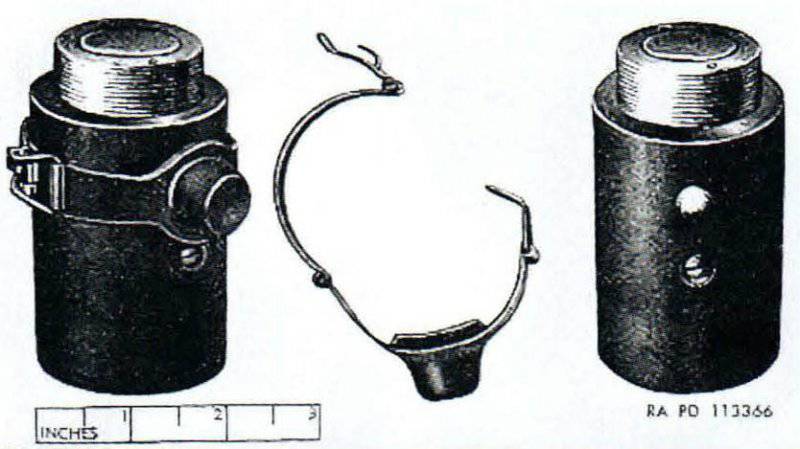
Coupling with a safety strip attached to it (left), a removed safety strip (center) and a coupling without a strip (right)
М9А1 and М20 The Portuguese army used against the rebels in its overseas departments in Africa. The versions МХNUMX were made in Austria and Spain. Spanish company "Instalala" SA from Zaragoza began in 20, designing an RPG in the style of the American "Super-Bazooka" M1951. The result of these works was the adoption of the Model 20 grenade launcher and its modifications, the Model 53, which was replaced in 58 by the “Instalaz” М1965 (“lnstalaza” М65).
In November 1955, the Israeli Defense Ministry’s Director General, Shimon Peres, offered to buy American 3,5-inch Bazookas. The manufacturer promised to make a batch of grenade launchers in a month, at a very low price, and in July 1956 350 "Super Bazook" arrived in Israel. It turned out that they were inferior to the previously purchased French 73-mm grenade launchers, so they were transferred to the auxiliary units of the army and the territorial defense of HAGMAR, and already in 1958 they were removed from service. At the end of the 1950, the Israeli grenade launcher Rav-Bazooka (rav-Bazooka, i.e. Super Bazooka) entered the Israel Defense Forces (IDF), but it had nothing to do with the American.
China, having received the M20 as a trophy in the Korean War, launched the production of this rocket launcher. Released in the People's Republic of China anti-tank grenade launcher Mod. The 51 (another name for the weapon is Reactive PTR Mod. 51) was an almost exact copy of the American Super Bazooka. Sample Mod. The 51 had a caliber of 89 mm, a full length of 1 530 mm and a mass of 5,4 kg. A rocket grenade with a long 600 mm weighed 4,04 kg, of which 1 kg was in the warhead, and developed an initial speed of 100 m / s. Penetration - 270 mm. Sighting range - 400 m, effective - 185 m. The rate of fire 8 shots per minute.
As it is no wonder, “Super-Bazuki” were present in the arsenal of the Afghan Mujahideen - such a grenade launcher captured by our soldiers can be seen in the exposition of the Central Museum of Border Troops.
If for the 2,36-inch "Bazook" the war in Korea was the last major armed conflict in which they were used, then for the 3,5-inch it became a successful debut. The bitter experience of the first weeks of battles with the North Korean Thirty-Fours forced the Americans to urgently change Bazuki. Now, instead of 60-mm grenade launchers, the soldiers received new M20 “Super-Bazookas”, hastily delivered by air from the USA along with instructors. Their first batch received 24-I division. The 1 Division of the Marine Corps and the 7 Infantry Division that took part in the Incheon operation also already had the Super Bazooka in service, but the 18 of the M20 grenade launchers in the assault platoon of the Marines battalion (162 “Super Bach ) and one grenade launcher in the weapon compartments of each infantry platoon of the infantry division (81 “Super-Bazooka” in total in the division). For Bazuki М9А1, as before, were intended for anti-tank defense of divisions of command and control in divisions.
With the advent of the “Super Bazook”, the position of the soldiers of the United States and YUKA at the front began to change for the better. The first success came during the fighting for the city of Daejeon. Trying to stop the advance of the North Koreans, the commander of the 24 Division, General William Deane, ordered his troops to take up positions at the turn of the Kumgan River near Daejeon. 20 July in 6 h "thirty-four" 105-th tank division of the KPA broke into the city. To fight the tanks organized special units, one of which was headed by William Dean. To take this step, he had to inspire his subordinates, who, at the sight of the T-34-85 who were considered invulnerable, were often just
fled without firing a single shot. The general himself had to show how to use the Super Bazooka against tanks. In the battles for Daejeon, the 105th division lost 15 tanks, eight of which were destroyed by fire from M20 grenade launchers. William Dean was awarded the Honor Medal for the defense of Daejeon, but he could only receive it three years after returning from captivity. In fairness, it should be noted that the success of American soldiers in the fight against the T-34-85 was associated not only with the effectiveness of the Super Bazooka, but also with the fact that the advanced North Korean tank units had to operate without the cover of infantry, which was able to break into the city only after 5 hours. By the end of 1950, the DPRK troops lost 239 T-34-85 tanks, most of which were shot down by M20 grenade launchers and aviation.
"Super-Bazuki", in addition to fighting armored vehicles, was successfully used to destroy long-term firing points and destroy enemy manpower, both in shelters and in open areas. When the hostilities took a protracted, positional nature and the threat from North Korean tanks (along with the tanks themselves) almost disappeared, only 15-20% of US units continued to use anti-tank grenade launchers, while the rest did so very rarely or did not use them at all. Many preferred 57-mm recoilless guns, which in the amount of three pieces were in service with a platoon of weapons of a rifle company. Surpassing the Bazuku in mass and inferior in power of ammunition, the recoilless weapon also had its advantages, such as a longer firing range and higher accuracy than the grenade launcher. In addition, the ammunition to the recoilless weapon weighed less, which means that they could carry more with them. In the conduct of hostilities in the harsh terrain of Korea, this was important. Some units preferred the Bazuka an additional machine gun, others used grenade launchers as a means of reinforcement during patrols and raids. By the end of the Korean War, the US Infantry Division was armed with the 465 Super-Bazook, the UCA-258 division.
In Vietnam, 3,5-inch "Bazooki", as well as 2,36-inch before them, were in service with all parties to the conflict. An infantry regiment of the army of South Vietnam in 1965 was supposed to have 24 grenade launchers. However, this was achieved only in 1967, when they were real, and not "on paper", full-equipped regiments consisting of 4 battalions of three-third composition. After the reorganization in 1971, one of the four battalions of the regiment was disbanded, and its companies transferred to the remaining battalions, the number of which increased from three to four companies. The disbandment of the battalion did not lead to a decrease in the number of "Bazook" in the regiment. The rifle company of the South Vietnamese infantry battalion had a platoon of weapons consisting of three sections: machine-gun (two M1919А6 machine guns), mortar (two 60-mm mortar M19) and grenade-launcher (two 60-mm or 88,9-mm "Bazuki" blues "). Americans supplied "Super-Bazooks" and paramilitary pro-government formations fighting the communists. In the army of North Vietnam and Vietcon-ha "Bazooki" of all types remained in service until the beginning of the 1960-s, when they were replaced by the Soviet RPG-2 grenade launchers.
The Americans used the “Super Bazookas” only at the initial stage of the war. Army units, like the marines, rarely used such weapons - mainly for the destruction of bunkers or as a means of fire support in street battles. Most of the time, grenade launchers were gathering dust in warehouses.
At the end of 1969, many ASPB fire support boats that were part of the 1st strike river flotilla, in addition to their conventional weapons, they were equipped with 3,5-inch Mk 47 Mod 0 launchers. ASPB boats combined powerful weapons, good security, high speed and solved a wide range of tasks on the Mekong, such as fire support for landing parties, escorting convoys , base defense, trawling anchor mines. The armament of the ASPB consisted of a 20-mm automatic cannon in the Mk 48 turret mounted on the bow, two large-caliber machine guns in the turret on the wheelhouse, and an 81-mm mortar aft. Boats were often equipped with another one or two 40 mm automatic grenade launchers or 12,7 mm machine guns.
The 47 Mod 0 was installed in two blocks of four barrels from M20А1В2 grenade launchers in each, fixed on the sides of the 48 Mod 4 tower Mk, armed with two large-caliber machine guns. Circular guidance of the installation was carried out by turning the turret, vertical guidance at angles from -15 ° to + 65 ° was carried out simultaneously with machine guns.
Used by all parties in the Korean, Vietnamese, Arab-Israeli, Indo-Pakistani and countless local wars around the world, the Super-Bazooka anti-tank grenade launcher has been distributed, comparable to that of RPG-7 today. I gave tribute to this weapon and fiery fighter against imperialism Che Guevara. In the first chapter of his book "Guerrilla War", he writes: "... One of the types of heavy weapons, very common in the partisan detachment, as it is easily transported and controlled -" Bazooka. " Currently, it can replace the anti-tank grenade, which is thrown with a rifle grenade launcher. Naturally, the "Bazooka" is captured from the enemy. This weapon is perfect for shooting at armored vehicles, as well as at open vehicles transporting troops, and for capturing small barracks with a limited garrison in a short period of time. But it should be noted that one person can carry no more than three shells for this weapon. ” And further, in the next chapter: “... The most reliable weapon in the fight against the tank is mine. But in the case when a partisan-tank combat takes place, say, in rugged terrain, bottles with flammable liquid can be used with great success. We are no longer talking about "Bazooka", which for the partisan detachment would be an excellent, though difficult to obtain weapon (at least in the first period of the war). " Finishing the book, in an annex devoted to “analyzing the situation in Cuba, its present and future,” Che Guevara points out the possibility of aggression against Cuba by the enemies of the revolution and even the occupation of the country and the associated transition to a guerrilla war. And once again Bazuka plays an important role: “The last defensive line of the rebel army, of this armed, organized vanguard of the people, will be the mountains. But the enemy will have to fight for every locality, for every house, for every road, for every height, for every inch of the land of our native country. And this fight will be given to him by the great rear guard, which will be the whole nation, trained and armed in accordance with the provisions that we will discuss later. Since our infantry units do not have heavy weapons, their command will have to pay special attention to the organization of anti-tank and anti-aircraft defense. In this case, the only type of weapon of a certain power they will have (with the exception of a few mortar batteries) "Bazuki", anti-tank grenades, quick-fire anti-aircraft guns, mines of various types. "
Thanks to Comandante, the Bazooki of American and Cuban production (the M20 was launched in Cuba) came to Guinea-Bissau. During his three-month trip to Africa, Che Guevara met with the leader of the local national revolutionary party PAIGC (PAIGC; Partido Africano da Independencia da Guine e Cabo Verde - African Party of Independence of Guinea and the Cape Verde Islands) Amilcar Cabral. After that, the first batch of Cuban weapons (including Bazooki) 14 in May 1965 arrived in Conakry on board the Uvero.
М20 and its modifications were delivered to Austria, Argentina, Bolivia, Brazil, Burma, Cuba, India, Japan, Luxembourg, Latin America, Morocco, Taiwan, Pakistan, Philippines, FRG, Portugal, Rhodesia, South Africa. South Korea, Sweden, Thailand, Tunisia, Turkey. In many parts of the world "Super-Bazuki" are used to this day. In Tunisia and Morocco, they continued their service in the new millennium. The ground forces of these countries had 2002 and 300 rocket launchers М150А20В1, respectively, on 1. They are still in service with the Palestinian and Syrian militants.
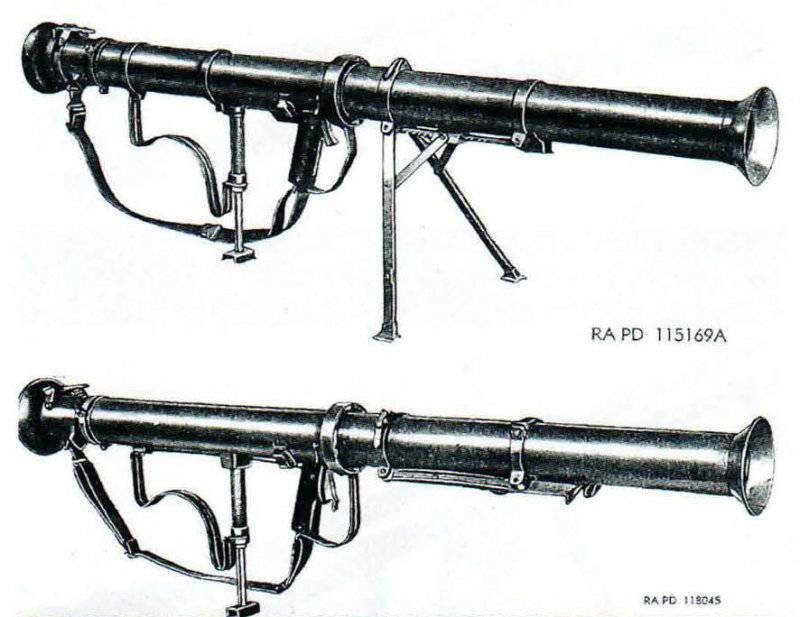
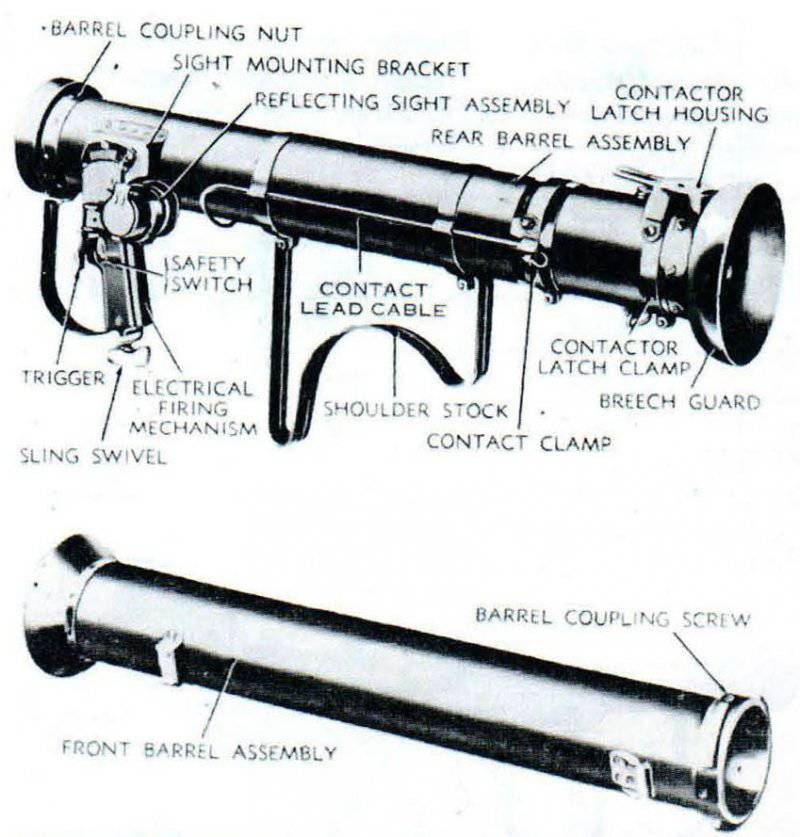
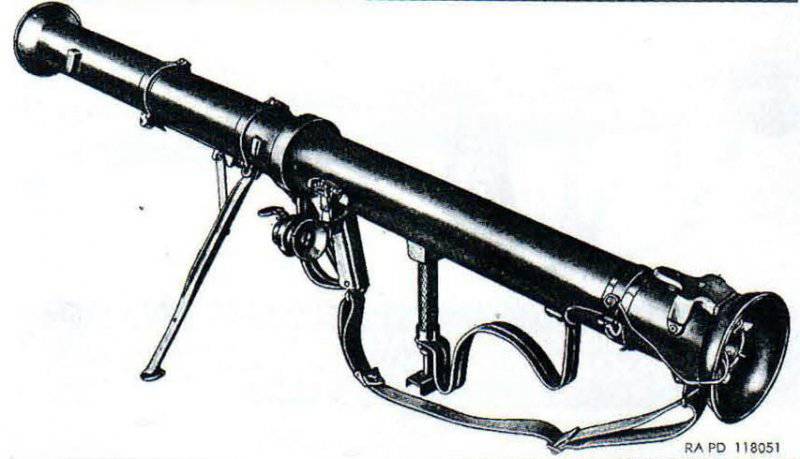
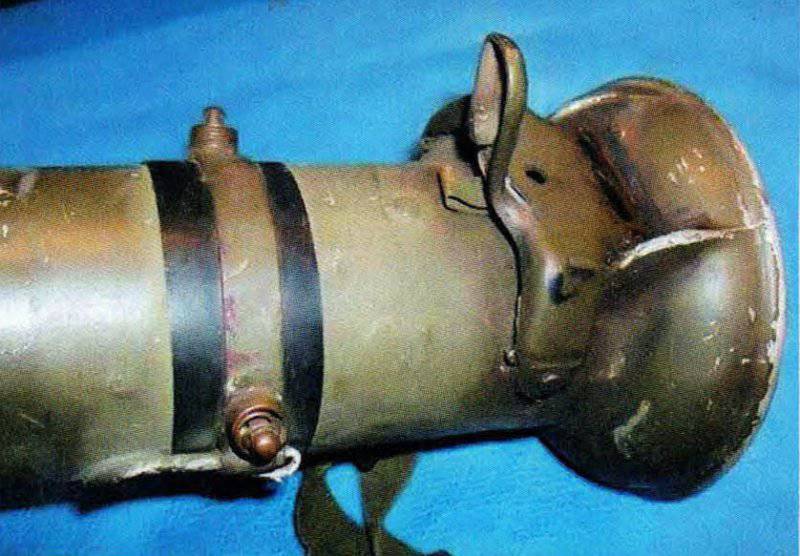
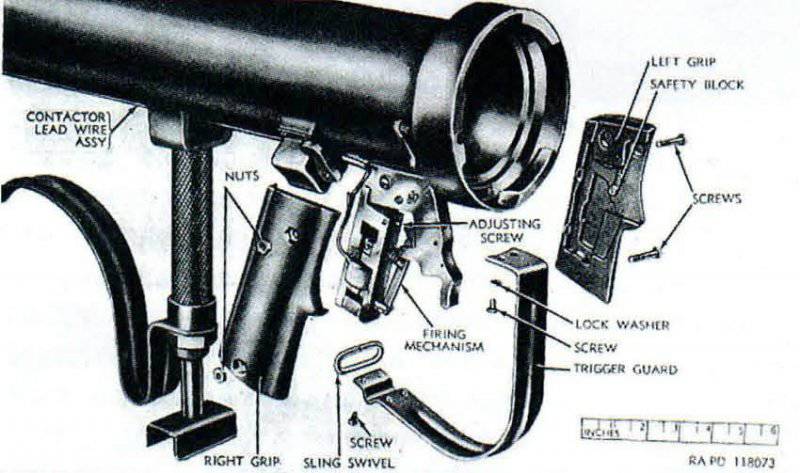
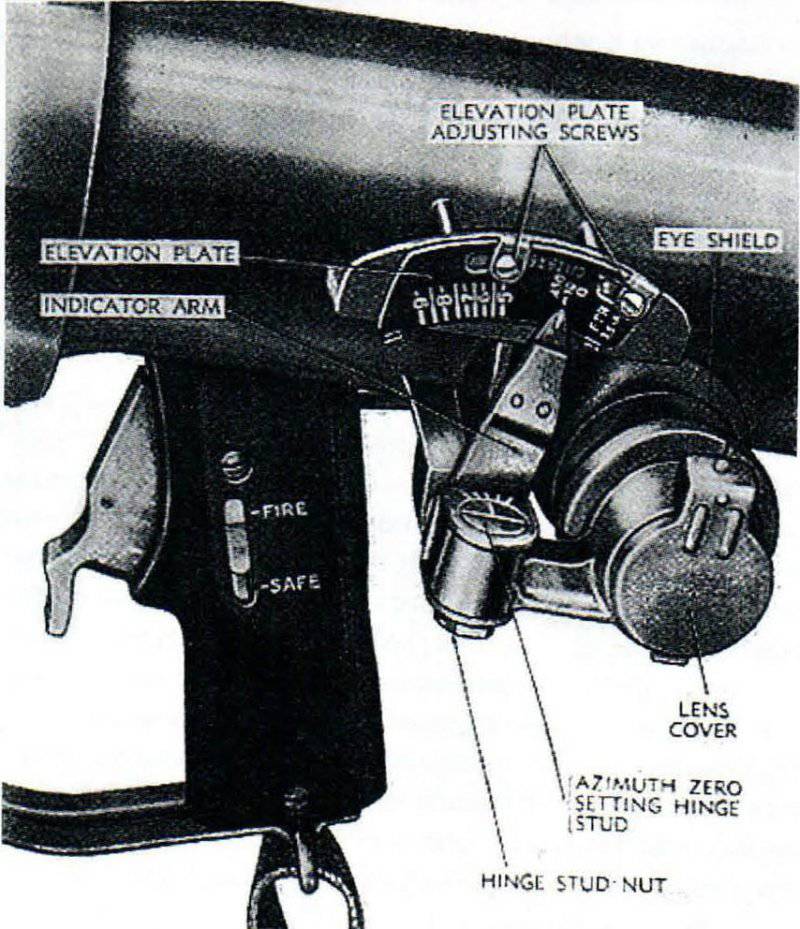
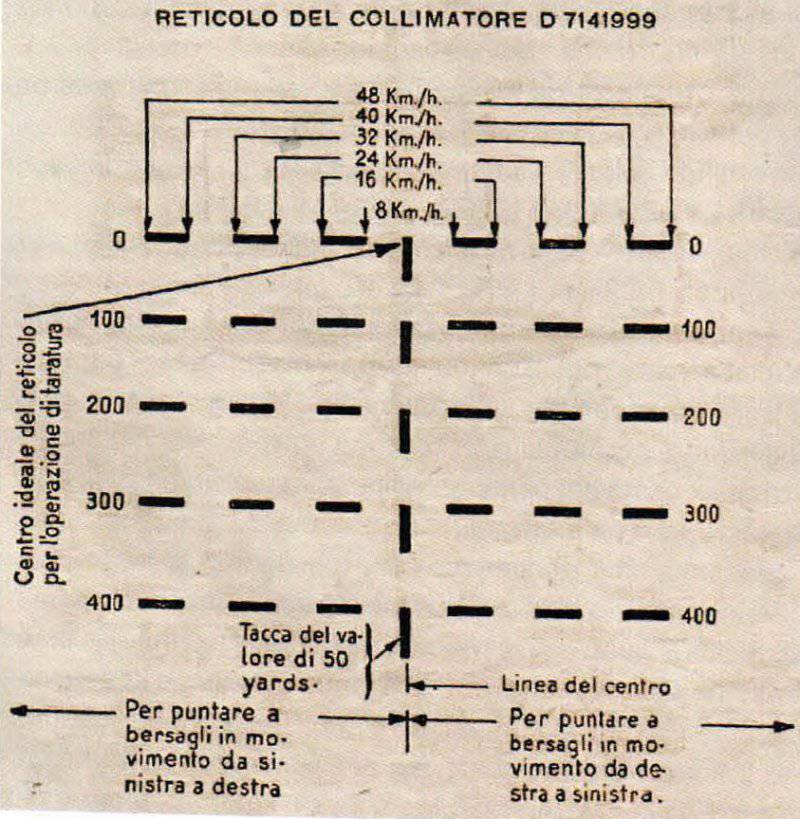
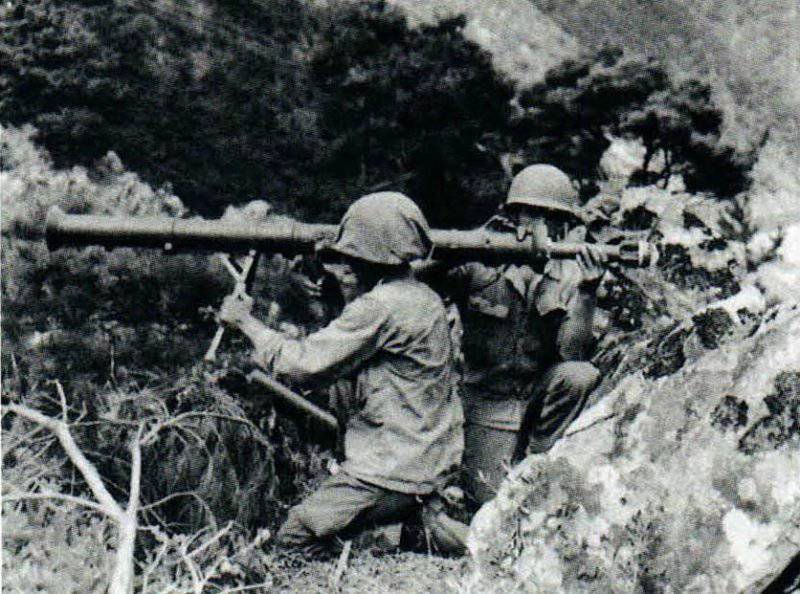
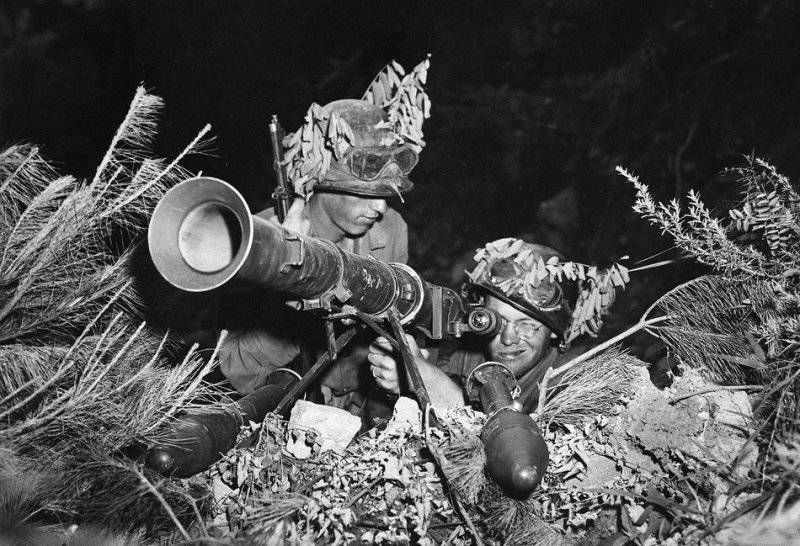
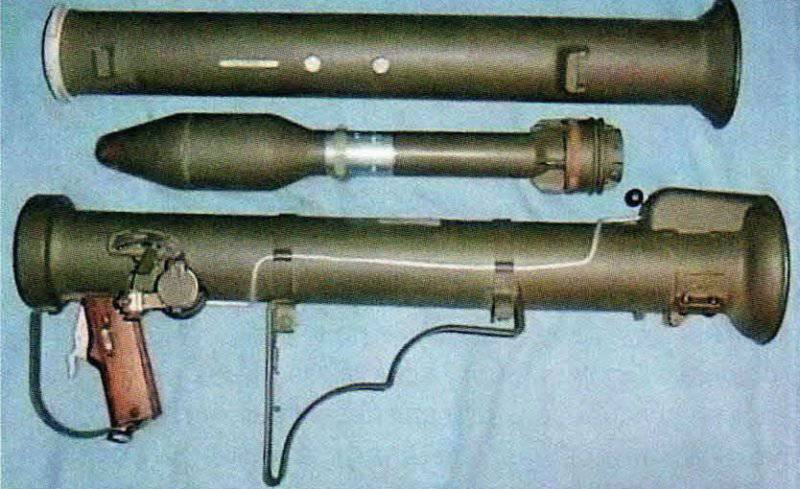
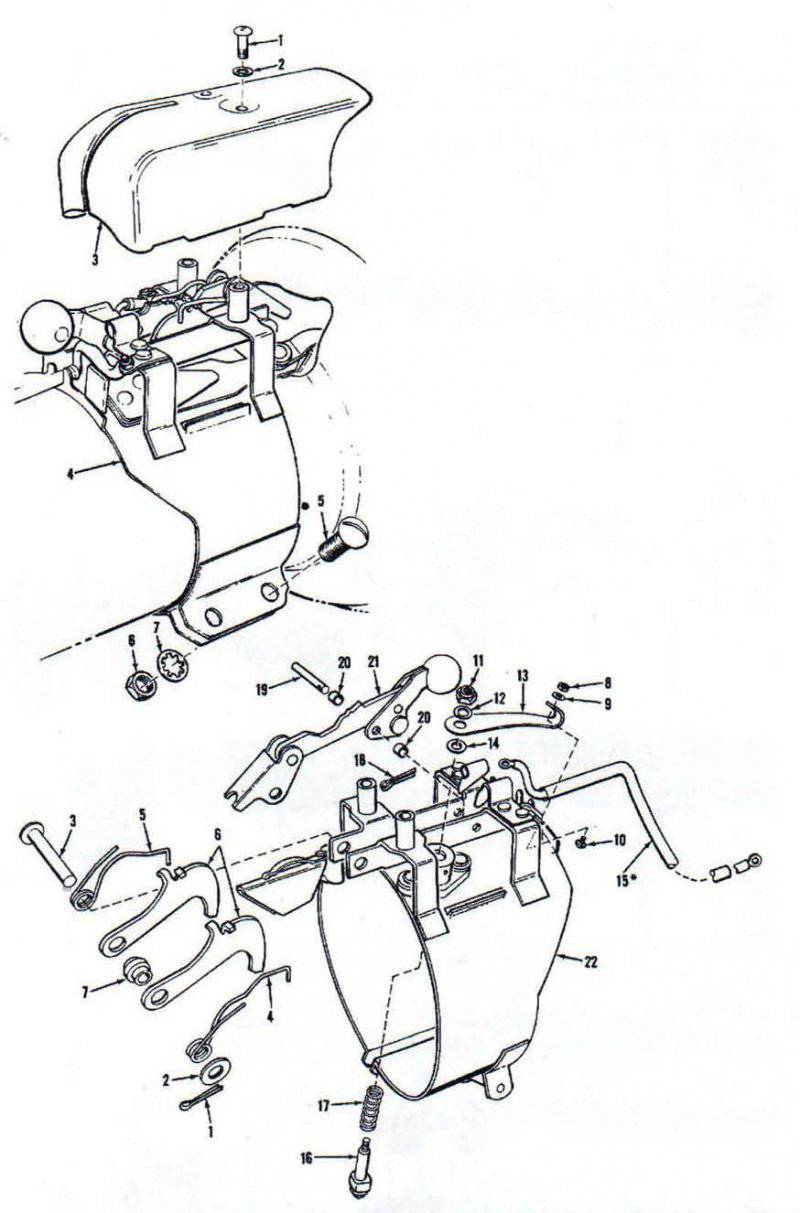
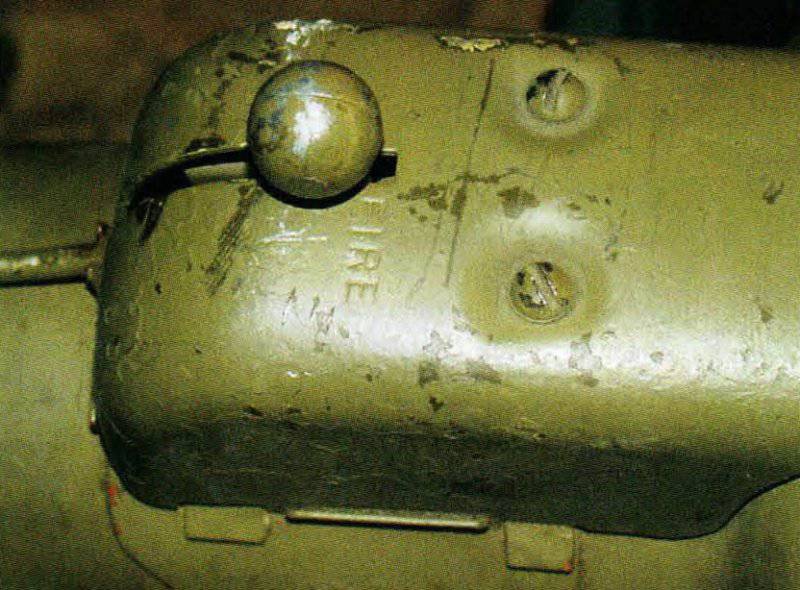
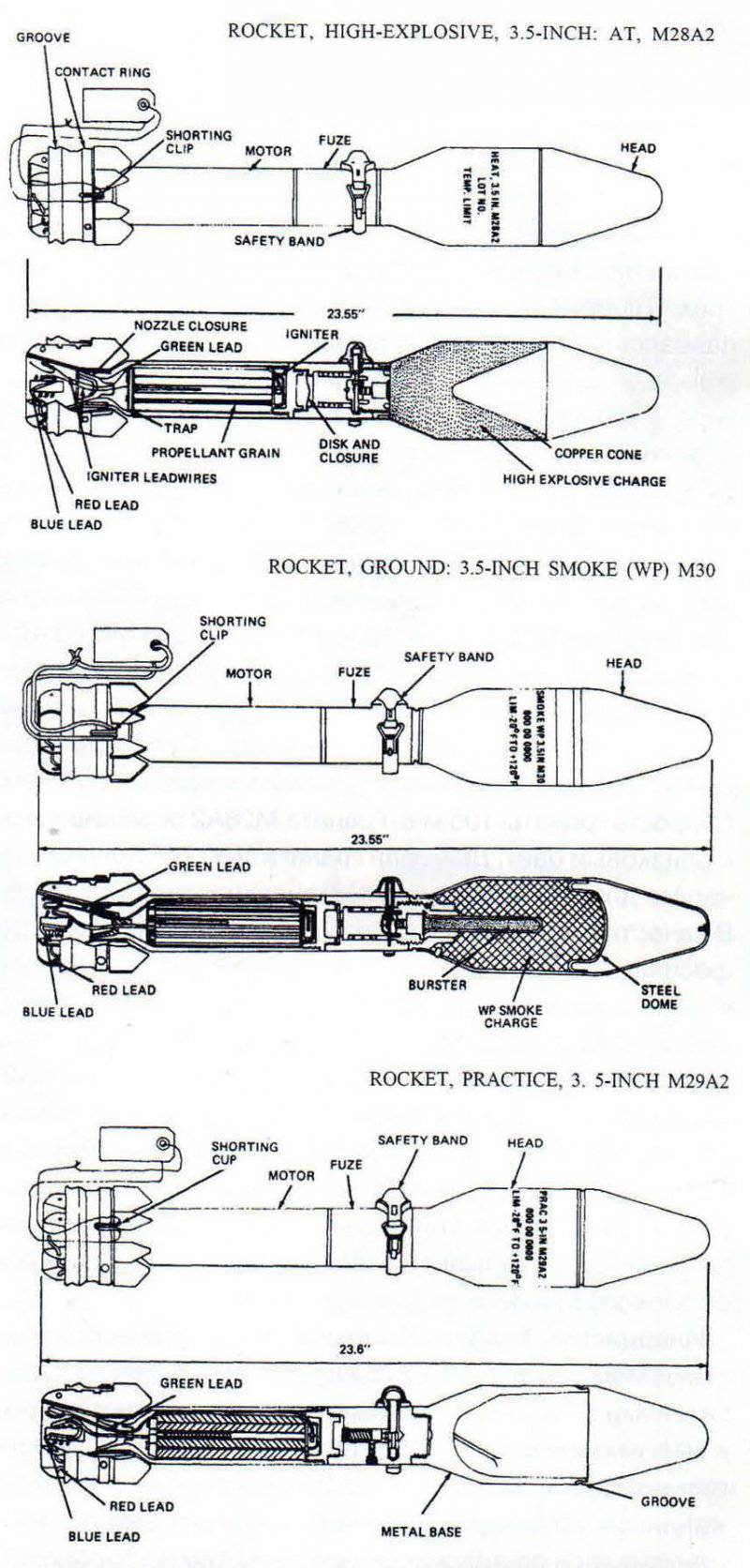
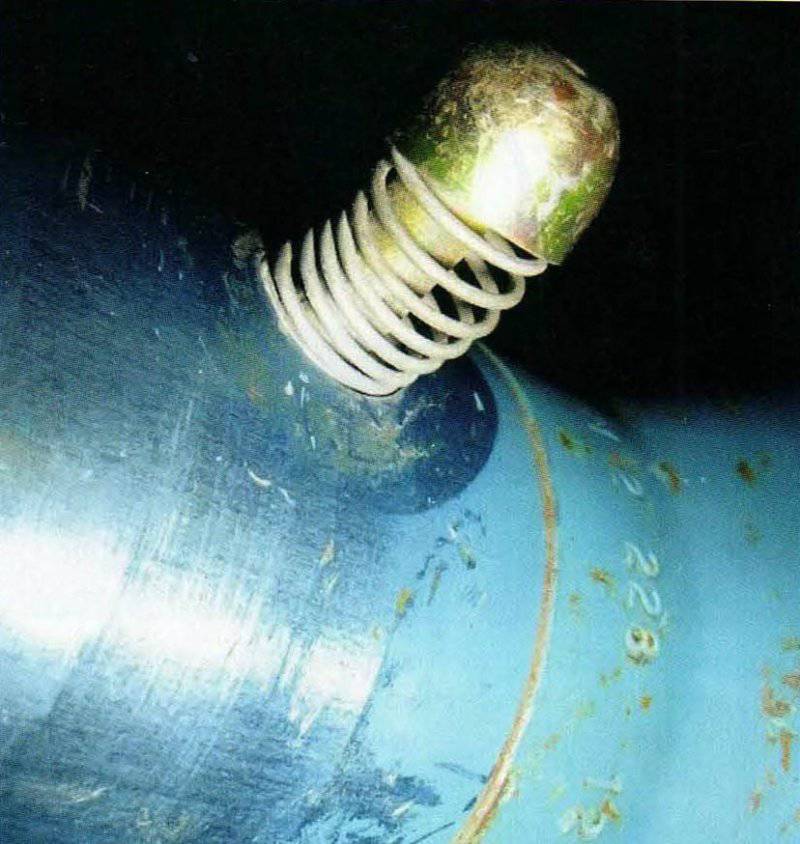
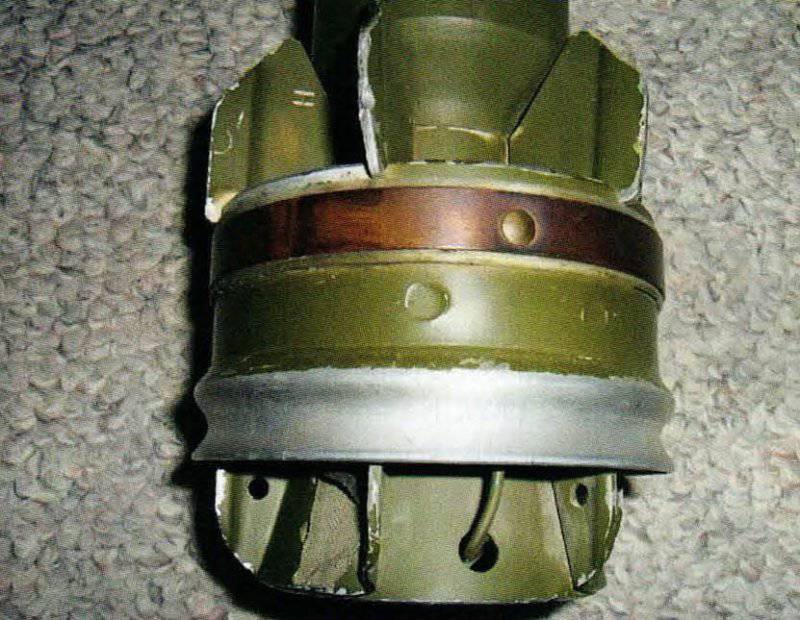
Information